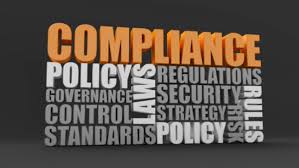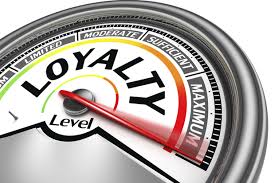Defining the Compliance Mission – More Than Just Preventing Violations
 I am not one to beg but I have decided I have nothing to lose here – please, when it comes to compliance, everyone has to adopt a new mantra. The purpose of compliance is not to prevent legal and code of conduct violations. Such a purpose is way too limited in scope and almost guarantees failure, because at one time or another, company employees will violate the law and/or the code of conduct.
I am not one to beg but I have decided I have nothing to lose here – please, when it comes to compliance, everyone has to adopt a new mantra. The purpose of compliance is not to prevent legal and code of conduct violations. Such a purpose is way too limited in scope and almost guarantees failure, because at one time or another, company employees will violate the law and/or the code of conduct.
If we do not change the message and the focus, the day of reckoning for all compliance officers is coming. Trust me, I am sure of it. Instead, our mantra has to adopt what every company cares about, or as Kevin O’Leary from Shark Tank repeats – Money!! Not to be so dogmatic, but in my mind an effective ethics and compliance program increases company productivity. Compliance is not aimed at ensuring compliance with the law and code of conduct, but rather is an effective way to increase productivity and ultimately improve the company’s financial performance.
The purpose of an ethics and compliance program is to promote a positive culture, which in turn translates to a positive bottom line increase in revenues. Stay with me on this – a positive culture leads to improved employee morale and productivity, and reduces employee turnover and rates of misconduct. All of this is true; no one can question the connection – common sense and research supports these basic premises.
When a chief compliance officer requests additional resources or wants to expand a compliance program to address a new and significant risk, the language of the CCO’s request has to embrace the overall purpose of a compliance program. Hopefully, the CCO already has explained this connection to the Board and senior management. If so, this perspective has to be reinforced again and again.
A forward-thinking compliance approach translates into mindfulness – connecting positive thoughts and strategies to fostering a culture of ethics and compliance so that every employee in the company understands the company’s culture and how it translates to his or her job.
Okay, I will stop now. You are likely shaking your head and whispering that I have gone off the deep end. Not really. All that is required is to assume that compliance has a broader purpose than just compliance with the law and the code of conduct. It needs to be translated into a positive message centering on the company’s culture and values. In doing so, compliance with the law and the code of conduct is subsumed into the overall purpose and performance of a compliance program.
We have read and heard a lot about Compliance 2.0. The elements of Compliance 2.0 easily fit within this overall framework that I am describing. Compliance 2.0 takes the operational elements of a compliance program and infuses them with a positive overall approach that promotes ethical conduct, independence of the compliance function, and accountability of senior leadership, executives, managers, and employees.
Contrary to many who question the values of this approach, the design and implementation of such a program is not as hard as everyone may think. Of course, it requires senior executive commitment.
 Senior executives have to be educated on ways in which they can promote a culture of ethics and compliance, and they have to take the time to define the company’s values. If they are willing to embrace the commitment, a CCO should be off and running, plugging in these senior leadership resources to supporting design and implementation of compliance elements that are consistent with a 2.0 model.
Senior executives have to be educated on ways in which they can promote a culture of ethics and compliance, and they have to take the time to define the company’s values. If they are willing to embrace the commitment, a CCO should be off and running, plugging in these senior leadership resources to supporting design and implementation of compliance elements that are consistent with a 2.0 model.
If you ask any CCO if they will work harder if senior management embraces the 2.0 model, you will undoubtedly hear a resounding yes from the CCO. It is music to a CCOs ears and energizes the CCO to design and implement initiatives to bring about success in the Compliance 2.0 model.















